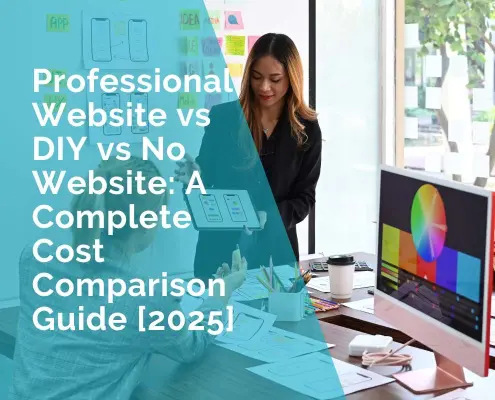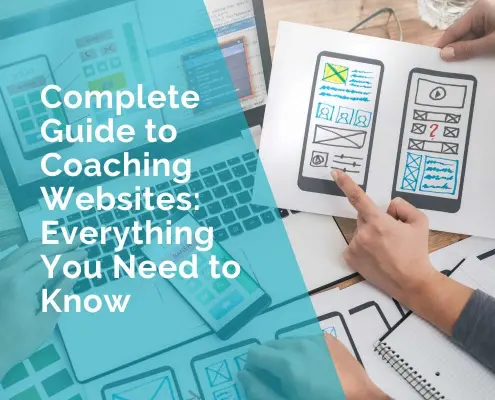The Ultimate Checklist For A Successful Local Marketing Campaign
In the ever-evolving landscape of business and marketing, a well-executed local marketing campaign is the key to unlocking the doors of your community and establishing a meaningful connection with your target audience.
In this comprehensive guide, you’ll be provided with the ultimate checklist to ensure your local marketing campaign succeeds and thrives while adhering to the principles taught in courses like Local Marketing Vault. From optimising your online presence to engaging with your local community, this article has you covered.
Getting Started With Local Marketing
Before delving into the intricacies of a successful local marketing campaign, lay on a solid foundation. In this section, you’ll be guided through defining your goals, understanding your audience, analysing your competitors, and planning your budget.
1. Defining Your Goals
Setting clear and measurable objectives is the cornerstone of a successful local marketing campaign. Your goals act as a roadmap, guiding your efforts and helping you measure your campaign’s success. Here’s a more in-depth look at this crucial step:
Specificity Matters: When defining your goals, be as specific as possible. Instead of a vague objective like ‘increase sales,’ aim for a particular target, such as ‘increase online sales by 20% within the next six months.’ This will provide clarity and motivation for your team.
Measurable Metrics: Identify key performance indicators (KPIs) that allow you to track your progress. In the above example, the KPI would be the percentage increase in online sales. Thus, having measurable metrics enables you to assess your campaign’s effectiveness accurately.
Relevance to Your Business: Ensure your goals align with your business’s mission and vision. Your local marketing campaign should support your long-term objectives and contribute to your brand’s growth and reputation.
Time-Bound Targets: Set a timeframe for achieving your goals. This adds urgency and helps you stay on track. In the same example, the goal has a specific six-month timeframe, giving your campaign a sense of purpose and a deadline to work toward.
Setting clear and measurable goals is the foundation upon which your successful local marketing campaign will be built. Marketing Vault and other courses teach you how to build your own advertising agency and run successful ads while building a thriving business. By being specific, identifying measurable metrics, aligning with your business’s mission, and setting time-bound targets, you are equipping yourself with the tools needed to define success and achieve it.
2. Knowing Your Audience
Understanding your audience is fundamental to creating content and messaging that resonates with them. Here’s a deeper dive into this critical aspect of local marketing:
Demographics: Analyse the demographic characteristics of your target audience. Consider age, gender, income level, education, and location. This data will help you tailor your marketing efforts to suit their needs and preferences.
Psychographics: Go beyond demographics and delve into psychographics. Understand your audience’s values, interests, hobbies, and pain points. This information allows you to create content that expresses your motivations and desires.
Customer Personas: Develop detailed customer personas based on your research. These are fictional representations of your ideal customers and include information like names, backgrounds, and specific preferences. Personas humanise your target audience, making empathising with and engaging them easier.
Feedback Loops: Establish feedback mechanisms to gather insights from your audience continually. This could involve surveys, social media listening, or direct interactions. Stay attuned to their evolving needs and adapt your campaign accordingly.
Incorporating these audience-focused strategies into your local marketing campaign ensures that your messaging and content resonate deeply with the people you aim to reach.
3. Competitor Analysis
Understanding your competitors is essential for differentiating your brand and seizing opportunities. Explore how to conduct a comprehensive competitor analysis:
Identify Your Competitors: Start by identifying who your direct and indirect competitors are in the local market. These businesses offer similar products or services and target a similar audience.
SWOT Analysis: Perform a SWOT analysis (Strengths, Weaknesses, Opportunities, Threats) for each competitor. This analysis helps you identify areas where your business can excel or where you need to improve.
Unique Selling Proposition (USP): Determine what differentiates your business from competitors. Highlight your USP in your marketing strategy to appeal to customers looking for something different.
Market Trends: Keep an eye on industry and market trends. Understanding where the market is heading can help you position your brand for future success.
By conducting a thorough competitor analysis, you’ll be better equipped to differentiate your brand, identify growth opportunities, and adapt your local marketing campaign to stay ahead in your local market. With this knowledge, you can fine-tune your strategies to better meet the needs and expectations of your target audience.
4. Budget Planning
Proper budget planning ensures you have the resources to execute your local marketing campaign effectively. Explore this aspect in more detail:
Allocate Funds Strategically: Consider the various marketing channels available and allocate your budget strategically. For example, if online advertising offers your business the most significant potential ROI, give a substantial portion of your budget there.
Contingency Planning: Be prepared for unexpected expenses. Set aside a portion of your budget as a contingency fund to address unforeseen challenges or opportunities that may arise during your campaign.
Testing And Experimentation: Budget for testing and experimentation. Not all marketing strategies will yield immediate results. Allocate a portion of your budget to try new approaches and refine your campaign over time.
By meticulously managing your budget, you can ensure you have the necessary resources to execute your local marketing campaign effectively and adapt to the ever-changing marketing landscape.
Crafting Compelling Content
Content is the heart of your local marketing strategy. Here, you’ll explore how to develop a content strategy tailored to your local audience, optimise for local search engines optimisation, and make a meaningful impact on social media and through email marketing.
Developing A Content Strategy: Your content is your brand’s voice in the digital world. Create a content calendar that outlines the types of content you will produce, including blog posts, videos, and social media updates. Ensure that your content aligns with your audience’s interests and provides them with genuine value.
Local SEO (Search Engine Optimisation): Local SEO plays a pivotal role in ensuring your business is discoverable by potential customers in your area. Incorporate local keywords into your content to enhance your visibility in local search results. This includes mentioning your city or region, using location-specific tags, and creating content relevant to your local area.
Engaging On Social Media: Social media platforms are powerful tools for connecting with your local audience. Actively engage with your community by sharing local news, events, and user-generated content. Building a sense of belonging among your followers can significantly impact your brand’s image.
Leveraging Email Marketing: This remains a valuable channel for engaging with local customers. Build and segment your email list to send personalised messages to your local audience. Promote local offers, events, and exclusive discounts to incentivise engagement.
By expanding on these content strategies, you’ll be better equipped to create engaging and impactful content tailored to your local audience’s interests and needs. These strategies will help you effectively connect with your local community and achieve your marketing goals.
Promoting Your Brand Locally
Building a strong local presence goes beyond online efforts. In this section, you’ll be equipped with strategies for online advertising, forming partnerships with local businesses, and continually optimising your local SEO for maximum visibility.
1. Online Advertising
This is a powerful tool for targeting local customers with precision. Here’s how to make the most of it:
Geographical Targeting: Use online advertising platforms like Google Ads and Facebook Ads to set specific geographical parameters for your campaigns. This ensures that your desired local audience sees your messages. For example, you can target users within a certain radius of your physical location or in specific zip codes.
Local Ad Extensions: Utilise local ad extensions that display important information such as your phone number, address, and a clickable call button directly in your ads. This makes it easy for potential customers to contact or visit your business.
Keyword Optimisation: Incorporate local keywords into your ad copy to increase relevance. Mention your city or region in your ad text to inform users that your business is nearby.
Mobile Optimisation: Given the prevalence of mobile device usage, ensure that your ads are optimised for mobile. Create responsive ads that provide a seamless experience for users on smartphones and tablets.
By implementing these strategies, you’ll be well-equipped to make the most of online advertising and effectively target local customers. Your ads will reach the right audience and provide a user-friendly experience that enhances the likelihood of attracting and converting local prospects.
2. Forging Local Partnerships
Collaborating with other local businesses or organisations can expand your reach and foster a sense of community involvement. Here’s how to approach local partnerships:
Joint Events: Partner with complementary local businesses to host joint events or promotions. For instance, if you run a coffee shop, you could collaborate with a nearby bookstore for a themed book reading event.
Giveaways And Contests: Organise giveaways or contests in partnership with local influencers or organisations. This extends your reach and creates buzz and excitement within your local community.
Co-Branded Campaigns: Create co-branded marketing campaigns promoting your business and your partner’s. This can include joint advertising, co-authored content, or co-hosted webinars.
Community Involvement: Get involved in local charity events or sponsor local sports teams. It can enhance your brand’s image and build strong connections with residents.
By engaging with other businesses, influencers, and community organisations, you’ll position your brand as a vital contributor to the local ecosystem, ultimately strengthening your presence and impact in the community.
3. Continual Local SEO Optimisation
Local SEO optimisation is an ongoing effort to ensure your business is highly visible to local customers. Here’s how to maintain and improve your local SEO:
Accurate Business Information: Maintain accurate and up-to-date business information on all online platforms, including your website, Google My Business, social media profiles, and local directories. Consistency in your NAP (Name, Address, Phone number) details is crucial for local SEO.
Customer Reviews: Motivate satisfied and happy customers to give reviews on platforms like Google, Facebook, and Yelp. Respond accordingly to negative and positive feedback to show your commitment to customer fulfillment.
Local Content: Continue creating content that is relevant to your local area. This can include blog posts, articles, and event announcements related to your community. Local content helps establish your authority as a local expert.
Local Link Building: Seek opportunities for local link building by partnering with local organisations, getting featured in local news articles, or contributing to local blogs and forums. Quality local backlinks can boost your local search rankings.
By ensuring accurate business information, actively seeking customer reviews, creating relevant local content, and building quality local backlinks, you’ll be well-equipped to stay competitive and attract customers.
Measuring And Adjusting Your Campaign
To ensure your local marketing campaign stays on course and evolves with your audience’s needs, measuring your results is crucial. Here, you’ll explore metrics tracking, A/B testing, feedback collection, and monthly reporting for data-driven decision-making.
1. Tracking Your Metrics
To assess the effectiveness of your local marketing efforts, it’s vital to monitor key performance metrics continuously. Utilise tools like Google Analytics and social media insights to gather valuable data. Pay attention to metrics such as:
Website Traffic: Track the number of visitors to your website and analyse their behaviour, including page views, session duration, and bounce rate. This data reveals how users interact with your online presence.
Conversion Rates: Measure the conversion rates for specific actions you want users to take, such as signing up for a newsletter, purchasing, or requesting more information. Understanding conversion rates helps you gauge the effectiveness of your call-to-action strategies.
Engagement Levels: Assess the engagement levels on your social media platforms, including likes, shares, comments, and click-through rates. Engagement metrics indicate how well your content resonates with your local audience.
This data-driven approach enables you to make informed decisions, optimise your strategies, and improve your efforts to engage with your local audience effectively.
2. A/B Testing
Experimentation is a valuable practice in local marketing. A/B testing involves trying different marketing strategies and messaging to identify what resonates most effectively with your local audience. It allows you to refine your approach continuously for better results.
For instance, you can A/B test variations of your ad copy, email subject lines, or landing page designs. By analysing the performance of each variant, you can make data-driven decisions to optimise your campaign.
3. Collecting Feedback And Adapting
Listening to your customers is paramount in the local marketing landscape. Actively collect feedback through various channels, including surveys, online reviews, and social media comments. Pay attention to both positive and negative feedback. Use this information to make necessary adjustments to your campaign strategies, address any concerns promptly, and improve the overall customer experience.
By showing that you value and act upon customer feedback, you build trust and loyalty within your local community.
Conclusion
A successful local marketing campaign requires careful planning, audience understanding, competitor analysis, and effective budget management. Crafting compelling content, leveraging online advertising and local partnerships, and maintaining strong local SEO are essential steps to reach and engage your local audience. Furthermore, measuring your campaign’s performance through metrics tracking, A/B testing, feedback collection, and monthly reporting is vital for continuous improvement and staying attuned to your audience’s evolving needs. By following this ultimate checklist, you’ll be well-equipped to succeed and thrive in your local market, establishing meaningful connections and driving the growth of your brand within your community.











